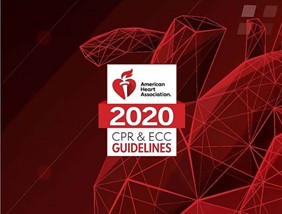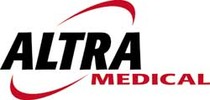|
Updated October 21,2020
The American Heart Association announced the official 2020 American Heart Association Guidelines for CPR & Emergency Cardiovascular Care (2020 AHA Guidelines for CPR & ECC) .
|
 |
|
Every five years or so AHA issues new guidelines for CPR, AEDs and guidelines used for lay and professionals for resuscitation in and out of the hospital. They are based on new science. The following are highlights of the new guidelines for Science and Education. Please click here for a complete copy of the new Guidelines.
The guidelines are based on an international liason that evaluates new developments and science. Most of the changes in recommendations are for professional BLS and ACLS responders and instructors. There are over 250 recommendations published in Circulation, so if you are a professional, please visit the complete instructions. The following are highlights mainly for lay responders and high level of for BLS and ACLS. Visit www.ECCGuidelines.Heart.org for details.
In 2015 approximately 350,000 adults in the US experienced a cardiac arrest out of the hospital. Less than 40% receive layperson initiated CPR and fewer than 12% had AEDs applied before EMS arrived.
|
|
New Guidelines for Lay Responders
- There were no changes to the techniques of doing CPR - ie. depth of compressions, rate, and ratio of breaths to compressions. Neither were there changes in how an AED should work.
- AHA suggests a combination of self-instruction and instructor lead teaching with hands on training is recommended when instructor lead courses are not available (due to COVID, etc.) They found video based instruction is as effective as instructor lead instruction for many people.
- They recommend training high school aged students in how to perform high quality CPR.
- Continued emphasis on practicing High Quality CPR - correct rate, depth of compressions, full recoil and not leaning on the chest. Quality of CPR determines outcome.
- AHA added a sixth step in the chain of survival - the Recovery link. This is added to assist people who have had a cardiac arrest and their families adapt to the special needs that survivors have in the year or more following a CA.

- AHA continues to recommend community initiatives to promote CPR implementation, and public assess defibrillation programs should be implemented in communities at risk for cardiac arrest.
- 911 operators should instruct callers to start CPR if the victim is not conscious and not breathing.
- Other newer technologies such as telephone apps that register AED locations, and AED responders is under review and considered reasonable, but no hard data is available.
- Debriefing after an event is recommended for both clinical and out of hospital systems of care to identify whether guidelines are followed, identify opportunities for improvement, and to provide emotional support for the rescuers.
- New algorithms were added for lay responders and trained rescuers for Opioid-associated emergencies that includes a lay responder administering Naloxone if the person is not breathing normally and there is a suspected over dose.
- First Aid training includes the benefits of tourniquets and hemostatic agents for treating severe bleeding.
|
|
New Guidelines for BLS Healthcare responders
There are numerous changes to the BLS guidelines, the largest is related to training and retraining. Their goal is to save 50,000 more lives each year, ensure hospitals and providers have the best tools to deliver high-quality care to every patient every time. They introduced the new AHA Digital Resuscitation Portfolio. It is a partnership with RQI that will credential Healthcare Providers.
- High-quality CPR determines outcome
- CPR Skills decay
- Poor-quality CPR is a preventable harm
- RQI is an evidence based instructional design for in hospital training- mastery learning and deliberate practice, low-dose, high frequency training, contextual learning, feedback and debriefing and assessment.
|
|
New Guidelines for ACLS (Adult Cardiac Life Support)
- Enhanced algorithms and visual aids were made for BLS and ACLS scenarios
- Previous recommendations on the use of Epinephrine were reaffirmed and emphasis on early administering EPI
- Use of real time-audiovisual feedback is suggested as a means to maintain CPR quality.
- Continuous measurement of arterial BP and ETCO2 during resuscitation may be useful to improve CPR quality
- Double sequential defibrillation is not recommended
- After ROSC, there are a number of parameters that need to be closely monitored - please see guidelines for details, and it recognizes after a cardiac arrest, recovery continues long after hospitalization and an assessment of the patients needs should be done prior to discharge and on going.
- An algorithm for addressing cardiac arrest during pregnancy was developed.
New Guidelines for PALS (Pediatric Advanced Life Support)
- Increases are made to the rate of ventilation for infants and children who are intubated and cuffed ETT's are recommended.
- Early use of Ephinephrine is also recommended in children with non-shockable rhythms.
- Invasive measurement of blood pressure is recommended to improve CPR quality
- There are other changes related to treating seizures after ROSC, treating septic shock, coricosteriod administration, hemorrhagic shock, opioid overdoses, myocarditis, and many other areas.
- New updates are provided for Neonates. Please see guidelines for details that are very technical and beyond the scope of this web-page.
|
|
Note! Instructors are required to complete their instructor updates by February 1, 2021 and begin teaching the new courses February 1, 2021.
|
 Loading... Please wait...
Loading... Please wait...

